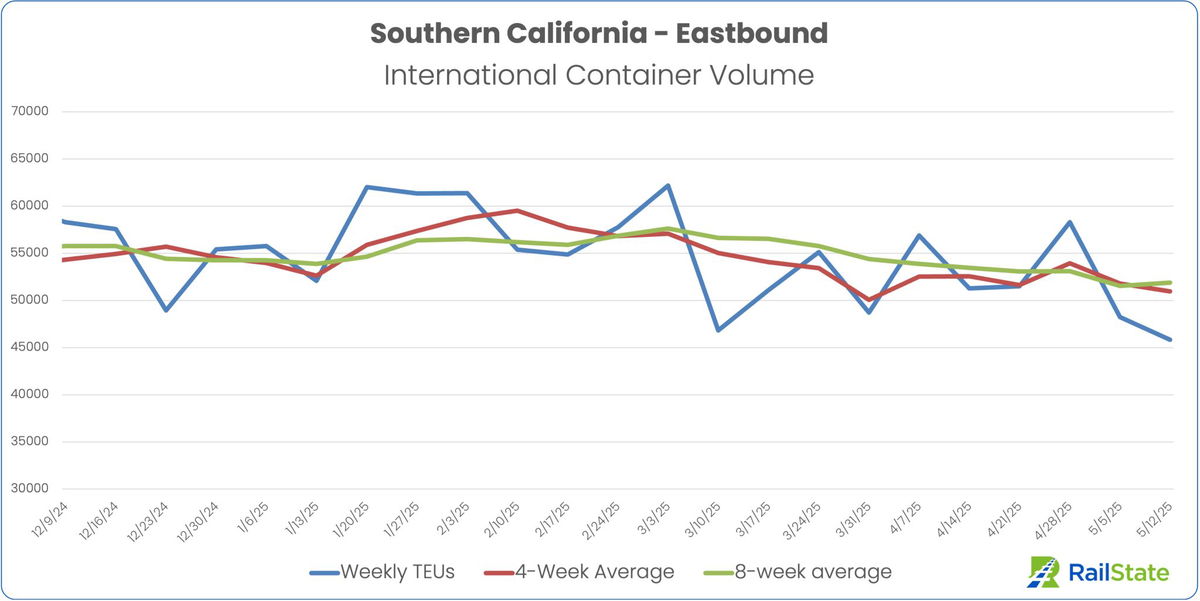Reflecting the sting of steep tariffs levied on Chinese imports, eastbound international container volume out of Southern California declined to the lowest level in six months during the week that ended on Sunday, according to data from RailState.
The weekly volume was down 5% compared to the prior week and 10% compared to the four-week rolling average, the rail traffic monitoring company said.
The data shows the impact of the decline in shipments bound to the ports of Los Angeles and Long Beach from China amid the U.S.-China trade war, which saw tariffs as high as 145% on Chinese-made goods and materials.

The international container volume on eastbound trains, tallied by RailState monitors along BNSF Railway and Union Pacific (NYSE: UNP) main lines, was 26.3% lower than the peak 2025 week of March 3-9.
“The early March high point coincided with frontloading by importers in advance of the original start date for tariff increases,” RailState said in a LinkedIn post Monday.
The U.S. and China called a 90-day truce in the trade war last week, with the U.S. reducing tariffs to 30% on most Chinese goods. Many trade experts expect another surge of imports to the U.S. as companies seek to beat the latest tariff deadline.
“We’re expecting to see a return to similar activity in the near-term with companies rushing to build up inventories during the 90-day pause on higher tariffs,” RailState said.
RailState can identify cars and containers by type, including the 20-, 40- and 45-foot international containers that pass its sensor network.

